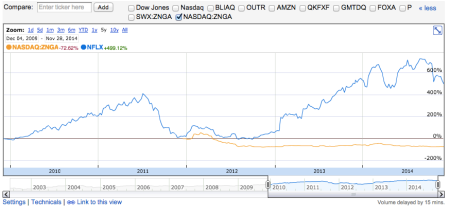A commodity is a good for which there is demand, but which is supplied without qualitative differentiation across a market. Commodities are substances that come out of the earth and maintain roughly a universal price. Wikipedia
I find it hilarious when some people describe clouds or the IaaS market as a “commodity”, or even worse – “legacy”.
It is a common mistake that I see again and again by people who don’t have a clue in what they are talking about or just ignore the little details.
These are the little details you might call “reality”.
[picapp align=”none” wrap=”false” link=”term=oil+rig+sea&iid=8827400″ src=”http://view4.picapp.com/pictures.photo/image/8827400/file-photo-ocean-guardian/file-photo-ocean-guardian.jpg?size=500&imageId=8827400″ width=”500″ height=”341″ /]
The first point I want to make is that “Commodity” is often misinterpreted as “Easy to Produce” or “Low Margin,Bad Business”.
Take a look at oil production. While the end product does not have qualitative differentiation,its production requires some of the most sophisticated technology available. Drilling oil from the bottom of the sea necessitates huge investments, great science and an amazing technology.
Moreover, six of the ten biggest companies of the world are in the oil production sector, so maybe it is not such a bad business to be in.
Another example would be X86 chips. The X86 architecture is more-or-less the same as it was 30 years ago. It is available universally and there is no qualitative differentiation between different items. However, building a new FAB costs around $2B and Intel is one of the most successful companies on earth. No one would argue that there is no intellectual property in chip design.
[picapp align=”none” wrap=”false” link=”term=slow&iid=285366″ src=”http://view1.picapp.com/pictures.photo/image/285366/road-leading-the-ocean/road-leading-the-ocean.jpg?size=500&imageId=285366″ width=”380″ height=”380″ /]
The second important point is that vision is nice, but reality is nicer. My friend told me that in the late 90’s the technologists in Check Point thought that Intrusion Detection technology is an erroneous direction to follow. They thought that comparing signatures of attacks is reactive and it does not help the customer to passively monitor the attacks.
[picapp align=”none” wrap=”false” link=”term=inception+stills&iid=9386959″ src=”http://view4.picapp.com/pictures.photo/image/9386959/stills-from-christopher/stills-from-christopher.jpg?size=500&imageId=9386959″ width=”500″ height=”333″ /]
While they were right in their long-term vision, ISS sold hundreds of millions in IDS software ,in the meantime. Moreover, when the market shifted to IPS ( Intrusion Prevention systems) , ISS had good solid technology to start from, which took Check Point five more years to accomplish. As my father, the CFO, used to say, “The markets fix themselves in the long run, but in the long run we all die”. Technology adoption cycles are longer than they seem.
Some analysts are looking too far ahead. For example, two years ago everyone talked about hyper-visors as being commoditized. Microsoft and Citrix will give it it for free, KVN is for free anyway and VMWARE would have to follow. Surprisingly, in the last 12 months VMWARE sold more than $2B worth of , guess what, hypervisors.
Why are 200,000 customers being so silly and paying so much money when the analysts say differently?
For one reason, because Microsoft Hyper-V does not support NFS, yet, which is probably used by 40% of customers. Because Hyper-V can not handle memory over-commit, which means you’ll get about 30% less capacity from the same hardware. Because VMWARE Virtual Center is two generations ahead of Microsoft’s management server, and there is not much use for a hyper-visor that can’t be managed. See a nice post from 2008 about it.
So are the analysts the stupid ones?
Of course not. But they have not installed a hypervisor in the last five years. Furthermore , they are probably right in the long run. In three years from now (five years from 2008:) ) hypervisors might become a commodity. But it is much slower pace than it seems at first.
Remember how in 2000 Broadband Internet was just around the corner ? We’re in 2010 and only South Korea has upload and download speeds above 20Mbps . More on the commodity subject and especially in clouds in my next post.
32.095691
34.790289























